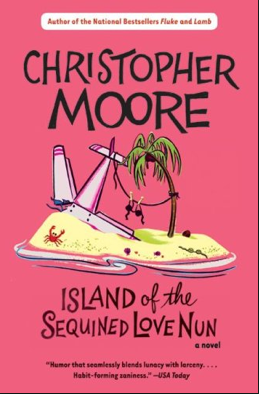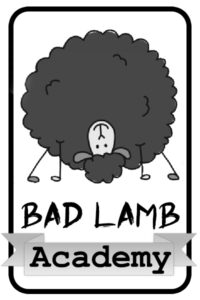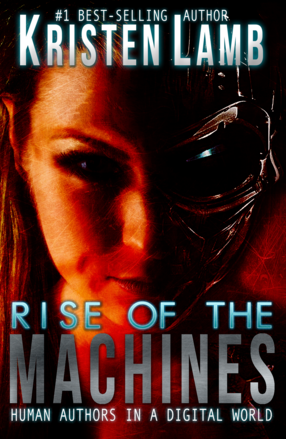One reason we might be tempted to use a flashback is to explain or to expound to artificially prop up weak characterization or a weak plot (the training wheel flashback). This is what good editors will cut. Then there is the other way to use time and that is time as a literary device. This is when our going back in time is used intelligently to serve the forward momentum of the story.
Last time, we delved into the idea of a loop around (one form of flashback as a literary device). Sometimes we see a story that is smack in the action and then after the inciting incident the story shifts back in time until it catches up where we began then continues real-time.
I used the example of Christopher Moore’s Island of the Sequined Live Nun. This is looping back in time as a literary device and I explained how this was done. So go HERE if you’d like to explore this method of storytelling.
Today we are going to look at parallel timelines.
What happens with a lot of new writers is that they simply see the surface. “Well, in X BOOK the author went back in time quite a lot, therefore flashbacks are AWESOME.” This is true on the surface, but if we dig down and look at WHY and HOW we see a bigger picture emerge. Some of our favorite books or TV shows or movies might appear to be just flipping back and forth in time, but if we can get an aerial shot, we see something more.
Often what the author is doing is running two timelines parallel. The present-day story is the superlative of the two and the reason is that the past has already happened. And when I say “present-day” I mean the most contemporary of the two timelines.
If a woman in The Great Depression is struggling to rebuild her life after losing the farm in the Dust Bowl and she does so by reading letters written by her grandmother during the Civil War, then the gal in the Great Depression’s decisions and thus the RESOLUTION to her struggle will be fed by the secondary timeline.
Unless she has a time-machine and THAT is a WHOLE ‘notha blog 😀 .
We will have the A Plot and the B Plot and the B Plot eventually merges and A finishes us out with a resolution.
An excellent example of this is the HBO series, True Detective. There is a tad bit of spoiler in this lesson, but not enough to ruin anything. I recommend watching and studying this series.
And I like using TV series because if we look at the TIME it takes to watch a full season and then cross-compare that with the TIME it takes to read a novel, the two are far more comparable than a movie and a book. Thus, I do recommend studying series to help with writing a novel because the intimacy with the characters and intricacy of the plot is much more relevant.
Anyway, Season One of True Detective has two timelines. The episode The Long Bright Dark starts us off and it involves two detectives (Rust Cohle and Martin Hart) being interviewed separately regarding a serial killer case they worked together back in 1995.
One might first be tempted to claim, “See! Look at all those flashbacks!” but hold up. WHY are we going back in time? We don’t have two detectives just talking about the Not So Good Old Days. If there was nothing important about the contemporary timeline, then our story would actually be SET in 1995.
The “present day” interview sessions would be contrived filler and likely meet a cutting room floor and for good reason. There is no POINT to them being there throughout unless we have a parallel timeline.
If there was nothing relevant in the present, we’d interview the cops and they’d tell an “I Remember When” story and not a very good one because that would actually KILL most of our suspense because we’d know, no matter what happened they LIVED to tell the tale. So I do recommend that if it is an I Remember When Story, try to maintain suspense.
***BTW, this is a MAJOR reason that prequels are a nightmare to write. We knew Obi Wan had to live to be in the New Hope so we weren’t ever worried.
For a parallel timeline story told in an I Remember When fashion, I recommend both the book and the movie The Green Mile.
In Stephen King’s The Green Mile there are TWO stories running in tandem. The contemporary story of an elderly gentleman in a nursing home who is being bullied intwined with the tale of a prison guard working death row. It isn’t until the end that we see HOW these stories fit together and WHY. The past takes up a lot of storytelling time, but it still is subordinate to the present. Eventually both timelines merge for the conclusion of the contemporary timeline (story) taking place in the nursing home.
What happened to John Coffee cannot be changed, but John Coffee changed Paul Edgecome and so the future is still mutable.
Back to True Detective…
True Detective is NOT an I Remember When story, it is a straightforward parallel timeline. There is a reason these men are being asked about the serial killer they hunted and caught back in the 90s. And the reason is, they didn’t get the right guy. They only stopped ONE bad dude in a nest of vipers and they failed to cut off the monster’s head. Women and children are still disappearing and being murdered (this is actually a turning point in the overall plot of the series).
Remember our litmus for going back in the past.
The PAST must be related to what is going on in the PRESENT and directly impact the FUTURE (how the story is resolved).
In the case of Cohle and Hart, the past is the reason they are in the interrogation room. A case they believed had been solved actually wasn’t and they nailed some low-level dirtbag and not the Big Kahuna. Being in that interrogation room eventually thrusts these two partners back to working together to finish what they started.
The reason we (the audience) are given a tour through the 90s is because all of this story is essential for uncovering the identity of the murderer and exposing a vast coverup (resolving the plot problem). It is also vital to see how these men were as young men, how they interacted, how they fought and why to fully appreciate the place they will eventually end up at the conclusion of the journey (resolving the character arc and story worthy problem).
We have to see the bitter, corrosive atheist Cohle and experience him to appreciate how this case eventually changes who he IS. We have to see the self-righteous and hypocritical (yet charming) Hart to appreciate the depth of character this case will create.
The parallel timelines are essential for us reconciling past and present both in story and character.
Thus, when you look at your favorite movies or shows or books, I recommend unpacking the WHY and the HOW so you can get a better glimpse of the magic this writer created.
A Quick Announcement: I ran into the first technical problem I’ve had in three years of running classes with my Log-Line Class (probably because my tech person went on vacation for the first time and wasn’t there to babysit me). We had class and an AWESOME time, but something went sideways with the recording. So I am holding it AGAIN July 8th to be able to get attendees that free recording.
The class on log-lines Your Story in a Sentence—Crafting Your Log-Line is $35 and as a BONUS, the first ten sign-ups get to be victims. IF YOU ARE QUERYING AN AGENT, YOU NEED A PITCH. I will pull apart and torture your log-line until it is agent-ready for FREE.
Now that I’ve announced that, what are your thoughts? Does the flashback seem clearer now that we are unpacking the various ways it is employed? Do you maybe see some of your favorite stories in a new light?
I LOVE hearing from you!
To prove it and show my love, for the month of JULY, everyone who leaves a comment I will put your name in a hat. If you comment and link back to my blog on your blog, you get your name in the hat twice. What do you win? The unvarnished truth from yours truly. I will pick a winner once a month and it will be a critique of the first 20 pages of your novel, or your query letter, or your synopsis (5 pages or less).
I will announce JUNE’S WINNER next post!
For those who need help building a platform and keeping it SIMPLE, pick up a copy of my latest social media/branding book Rise of the Machines—Human Authors in a Digital World on AMAZON, iBooks, or Nook.









32 comments
4 pings
Skip to comment form
Tell me where do dreams fall into all of this? No laughing! ?
Author
I will ask, though. What books and movies that you liked used a lot of dreams? Because it is A dream, it might fall into what I decided to call an “Easter Egg” flashback. I’m not being a smartass but if I SEE which pieces you liked that used a lot of dream sequences, then maybe patterned your work off of, it will help me dissect it and explain it better. 😀
The only comparison I can think at the moment would be in “Gladiator.” How he dreams of his wife and child spurring him forward and then of how he finds them hanging dead. It is a constant throughout that he fights with, albeit the past, in his mind.
Author
Dream sequences like that are fine, just make them BRIEF and usually they are in italics to denote it is a dream. I WILL add a caveat that movies are a visual medium so they get more leeway. But, “Gladiator” is a good example of a dream used well, not just as a prop to support weak structure.
I will admit I got a little high school freshman talking to the captain of the varsity cheer squad with that…eek! Much <3 and thank you!
Author
LOL. Cool! If you think of any other examples let me know! Dreams are like anything. They can be used. We simply need to make sure we are using them as a literary device and not plot Bond-o 😀
True detective is good though.
Date: Wed, 1 Jul 2015 17:45:24 +0000 To: tomgould749@hotmail.com
That’s a good question, Send Sunshine. I have dreams in my novel too.
Author
As we talk about plot devices, I will address dreams, journals, letters, etc. All in due time 😀
Very good post! I’ve always disliked flashbacks, but this puts into perspective how they can be done properly. Thinks to think about. I’ll have to check out this True Detective show too, sounds cool.
Author
Well, in this case, this going back in time gets CALLED a flashback, but I would call it a parallel timeline structure. And I LOVE True Detective, except every time I watch it I am all, “I CAN’T WRITE! WHAAAAH! I AM A HACK!” *takes copious notes*
Good posts on flashbacks, Kristen. I am curious about dreams, too, as I have a short one in my opening (prologue, but could also be start of first chapter).
Also, maybe this is the wrong place to post, but I missed your session on hooking the reader yesterday as couldn’t figure out how to access it (don’t think I received a password, even though I paid the $55. in advance–by paypal). Is there a recording of that session available? Or any new instructions? Thanks for your time.
–Thomas
Author
I have the recording that I will send you with notes. Also I am going to rerun the class so if you want to attend a live version I can just give you the password for that class.
Good job, Kristen. As I read this post, two works that MIGHT be examples occurred to me: Fried Green Tomatoes and The Longest Ride. Now, this post makes me want to dig up my first WIP with characters from two generations — a mother and daughter — and restructure it. (Someday. 😉
Reblogged this on Mitzi Flyte and commented:
More on using backstory. I must reread these two blogs and then go to Secrets Kept and revise.
Okay, I’ll aim for the re-run–just need new date, time, and password. Much obliged!
Thomas
I don’t write fiction. I don’t yet feel confident enough. I try now and again. I did write a short story years ago that linked scent to memory and a kind of time travel.
I really enjoyed this article. I do not like when a flashback seems like it is only used to “explain” the plot or to flesh out boring characters. I prefer when a flashback seems to add a twist to the ongoing story, or to possibly change an ongoing opinion you have.
The likeable sidekick is quiet and loyal but the flashback shows it is only because he used to be a major league jerk and everyone around him left because of his attitude. Now he is a “changed man” but why?
Awesome post. One of my favorite movies is “The Notebook” and I think it did an excellent job with the flashbacks. I have not watched “True Detective” but I have read some great reviews. My book has a couple flashbacks that are essential to explain one of my protagonist’s tortured soul and her character arc and resolution. I kept the flashback short and sweet not wanting to disturb the present momentum (too much). I’m thinking I should view “True Detective” to help in that regard? Thank you, Kristen
Great post, as usual
! It’s nice to know I’m doing this right. One less thing to worry about. 🙂
Sometime, I’d like to hear your thoughts on Christopher Nolan’s use of time in his storytelling. From Batman Begins to Momento to even Interstellar, and how those stories work.
I have seen the Green Mile several times. It took me twice to realize that the older man was…the yunger man and that the whole thing was a flash-back. In my own novels I have cautiously used flash-backs but were never really satisfied with what I put down on the paper until I did a great deal of editing. It takes a talent to make it seem as if the flash-back is actually the subordanant. (May be mispelled.)
Another of the commenters mentioned The Notebook. That was the best flash-back story I have ever seen. The writer of that screen play, novel, what ever was very talented.
Thank you for posting this article.
James M. Copeland
(I think I heard you saw I could feature this article in my own web site??? I am going to do it and ask forgivness afterward. Thanks)
Author
Feature away and technically Green Mile and The Notebook are parallel timelines so they are more than just flashbacks.
Dear Kristen:
This blog was featured in my own blog at my web site. The address is below. http://www.jamesmcopelandbooks.com
Thank you for the post. James M. Copeland
Good distinctions here. I agree about the artistry in True Detectives and the interplay of the two timelines. I didn’t find the bookending in The Green Mile as effective and would have been just as happy with only the main story. Two novels I think do a fantastic job of this timeline twining are Catch-22 by Joseph Heller and Beloved by Toni Morrison. Beloved is one of the most extraordinary books I’ve read, and part of the reason is the continual circling into the past. Each time the author circles back, she reveals more of the devastating past.
Yay! I’ve been looking forward to reading this. Now I’m all kinds of agreeing with a smug smile on my lille multiple-timeline-loving face. Ahem. Yeah. 🙂
Very interesting! I stumbled upon your blog for the first time this morning. I will be back!
Scott Lynch uses parallel timelines very effectively in his ‘Gentleman Bastard’ series. In the first novel, you are treated with Locke Lamora’s childhood as well as his current situation. In each novel you are treated to his past in the same way. What you learn is always related to the resolution or why he reacts to things as he does.
Very interesting post, Kristen.
Reblogged this on Christine R and commented:
I love how Scott Lynch uses parallel timelines in his ‘Gentleman Bastard’ series. Kristen Lamb explains how to work flashbacks into your story.
True Detective is on my watch list will watch as soon as tomorrow….
Oh Wow Kirsten. This blog is so relevant to me at this time. I have 2 time-slots in 1600s and 20th century, currently written as 2 separate stories. But story 2 is dependent on story one and I need to re-write the book as one story. Will bare all your wisdom on this subject in mind as I do my linear plan for the novel. Will also re-blog on my blog for by UK followers.
Susan Pope
Reblogged this on Susan Pope Books and commented:
This writing scenario is very close to my heart right now.
[…] Time as a Literary Device: Unpacking the Parallel Timeline. […]
[…] Detective Season Two does just that. I hate writing this because Season One was a masterpiece, and all I can think of is that maybe Nic Pizzolatto was a victim of his own success. It would be […]
[…] instance, in the series True Detective which I explored in this post, the story follows two detectives who do NOT get along. The more amiable detective is trying to get […]
[…] me share an example: True Detective – Season One (HBO). Sure we care about the detectives discovering the identity of the serial killer, but what […]